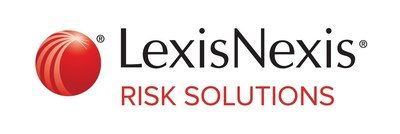LexisNexis® Risk Solutions Releases U.S. Auto Insurance Trends Report
LexisNexis Risk Solutions has released its U.S. Auto Insurance Trends Report, highlighting significant data trends in the auto insurance sector based on 2019 data. The report reveals a 20% increase in major speeding violations since 2015, peaking at 25% nationally. It identifies generational effects on violations, with Millennials responsible for 55% of incidents. Vehicle data indicates that 76% of vehicles have advanced driver-assistance systems, influencing insurance pricing. The report emphasizes the need for insurers to adopt technology to enhance customer service in a changing market, driven by factors like COVID-19.
- Technology adoption can enhance insurers' quoting, underwriting, and claims processes.
- 76% of vehicles have advanced driver-assistance systems, which can aid in accurate pricing.
- The report identifies opportunities for auto insurance carriers to better manage risks and improve profitability.
- Major speeding violations are on the rise, particularly among older generations.
Insights
Analyzing...
ATLANTA, Aug. 5, 2020 /PRNewswire/ -- LexisNexis® Risk Solutions introduces its U.S. Auto Insurance Trends Report, which aggregates annual market data about auto insurance shopping, underwriting and claims. The report explores how technology is increasingly shaping the auto insurance lifecycle. It includes recommendations for how insurers can leverage these trends to enhance their quoting, underwriting and claims processes in a rapidly evolving market.
"This report and the 2019 data presented in it serves as an important benchmark for auto insurance carriers as they continue to develop and enhance their operating plans while managing through unprecedented societal and economic change," said Adam Pichon, vice president and general manager, auto insurance, LexisNexis Risk Solutions. "Given how the pandemic has significantly impacted driving habits, it's more important than ever for carriers to leverage available technology designed to improve customer experience and regularly evaluate driving trends to identify deviations in order to better anticipate future risks and proactively adjust underwriting decisions."
The auto market data in this report was compiled with data from 2019 to help carriers identify and determine how they can best evolve their offerings, increase profitability, manage their business risks, improve their customer relationships and grow their books of business. For example, the report reveals that major speeding violations are up consistently 20 percent since 2015 and these violations have climbed to a peak increase of 25 percent nationally. It also identifies generational trends related to speeding violations and distracted driving. The report illustrates the importance of having comprehensive data about individual policyholders and their vehicles to provide accurate pricing.
Identifying Generational Trends to Price Accordingly
To explore the relationship between speeding violations and driver age, LexisNexis Risk Solutions delineated drivers into five generational groupings (Generation Z, Millennials, Generation X, Baby Boomers and Traditionalists). All five age groups had an increase in major speeding violations, such as super speeding, with the majority having greater than 30 percent growth since 2015. Millennials represented 55 percent of all speeding violations. Traditionalists (ages 71+) represent the only group where speeding violations have continued to increase over the past two years, reaching the highest relative growth among all generational groups in 2019.
Despite the fact that major speeding violations were up from 2015-2019, the report identifies that speeding violations in aggregate (both major and minor combined) have declined nationally since 2017. This decline, primarily in minor violations, is possibly due to an increased use of driving technologies, including interventions from GPS navigation apps that can help drivers adjust their speed in real-time.
Vehicle-Centric Trends
A LexisNexis internal analysis shows that about 76 percent of all 2019 vehicles are equipped with at least one advanced driver-assistance systems (ADAS) feature. Insurers need to pay more attention to the vehicle and its plethora of information, because ADAS and other vehicle features can have a significant influence over both driver behavior and vehicle capabilities. The same analysis found that vehicles that had been in an accident are approximately 10 percent more likely to be involved in another. It also found that the future claim frequency for vehicles that had been in four or more accidents was 23 percent higher than for vehicles that hadn't experienced an accident.
Distracted Driving is Becoming the New DUI
While driving under the influence of alcohol has always been a cause of many major driving violations, there has been a continued decline in alcohol-related reported violations since 2015. However, distracted driving violations have seen gradual increased trends in recent years and were associated with a significant spike in frequency of events in 2019. Consumers' hyper-connectivity and real-time alerts and distractions such as texting continue to be an issue that could potentially rival DUI violations as a factor in road safety, and insurance rating.
The Power of Real-Time Driving Data
While technology brings its fair share of challenges with smartphone distractions, it also enables tools that can be used to help reduce distracted driving and facilitate good driving rewards through telematics and usage-based insurance (UBI) programs. With the growing number of connected vehicles on the road, including the nearly one in three vehicles expected to be telematics-ready by 2023, promotion and adoption of UBI programs will also likely increase given the cost saving potential and ease of use. LexisNexis internal analysis also shows that combining mileage data with basic driving behavior attributes can generate up to seven times more predictability of driving risk.
"Having access to real-time telematics data, along with vehicle data and trended insights presents new opportunities for insurers to leverage technology, provide more personalized services and be a trusted partner to their customers," said Pichon. "As auto insurance carriers continue to recognize how technology is impacting all aspects of driving habits and the auto insurance lifecycle, we're excited for its potential to help them make more informed decisions and position themselves for long-term success."
The trends identified in the report also highlight opportunities for auto insurance carriers to enhance quoting, underwriting and claims resolution in this rapidly evolving market. Disruption and unexpected market conditions (like COVID-19) underscore the importance for auto insurance carriers to embrace technology and understand the role and new opportunities it presents.
To download the LexisNexis Auto Insurance Trends Report, click here.
About LexisNexis Risk Solutions
LexisNexis Risk Solutions harnesses the power of data and advanced analytics to provide insights that help businesses and governmental entities reduce risk and improve decisions to benefit people around the globe. We provide data and technology solutions for a wide range of industries including insurance, financial services, healthcare and government. Headquartered in metro Atlanta, Georgia, we have offices throughout the world and are part of RELX (LSE: REL/NYSE: RELX), a global provider of information and analytics for professional and business customers across industries. For more information, please visit www.risk.lexisnexis.com and www.relx.com.
Media Contacts:
Rocio Rivera
LexisNexis Risk Solutions
Phone: +1.678.694.2338
rocio.rivera@lexisnexisrisk.com
Mollie Holman
Brodeur Partners for LexisNexis Risk Solutions
Phone: +1.646.746.5611
mholman@brodeur.com
![]() View original content to download multimedia:http://www.prnewswire.com/news-releases/lexisnexis-risk-solutions-releases-us-auto-insurance-trends-report-301106190.html
View original content to download multimedia:http://www.prnewswire.com/news-releases/lexisnexis-risk-solutions-releases-us-auto-insurance-trends-report-301106190.html
SOURCE LexisNexis Risk Solutions








